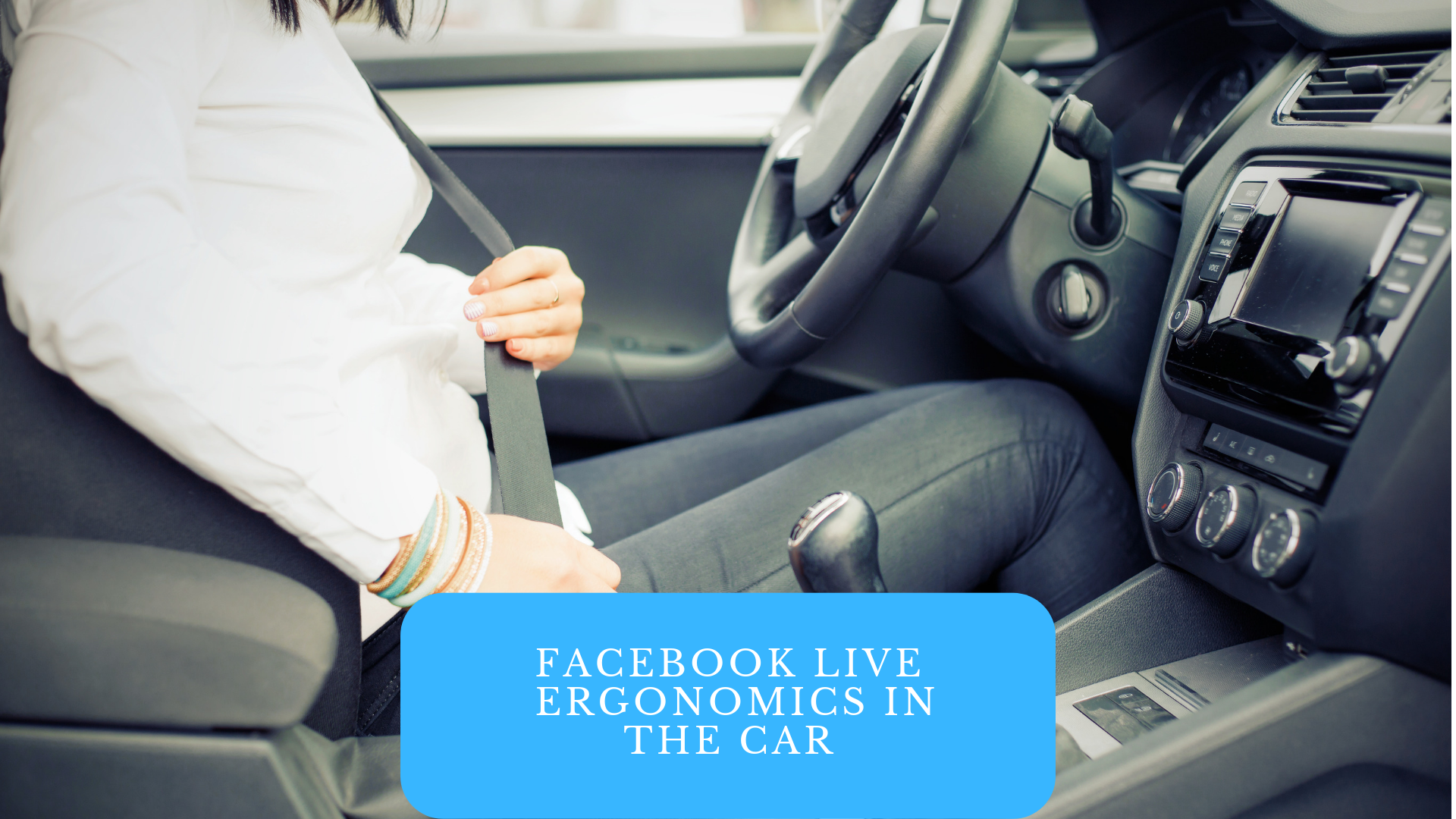Carpool lines are notorious for causing boredom, but they also can wreak havoc on your body. Carol Green, a physical therapist with OrthoCarolina, says sitting in the car for long periods of time can aggravate your neck, back, legs and even hands. The bad news is that between the carpool line, driving to and from school, waiting at sports practices, commuting and more, the average mom can spend hours in the car every week. Fortunately, Green gave us some tips to keep driving-induced stiffness and soreness at bay.
Small line, big pain
Carol says the number one occupation for back problems is truck drivers, because they sit for long periods of time, jump out of the truck to lift a heavy item and then get back in the truck to drive. Sound familiar? Moms confront some of the same problems.
The trauma of sitting still for a long time combined with the vibration of the vehicle can aggravate both your lower and upper back. That’s because the discs in your back get nutrition through the pressure gradient that occurs when you move. In other words, “motion is lotion” for your body, Carol says.
If you’re slumping in your seat or leaning forward to see traffic (or look for your child), your neck and upper back could get stiff or sore. Sitting for long periods of time can also compress the nerves running down the back of your legs and result in numbness or tingling from decreased circulation. You might even notice pain in your hands from having a tight grip on the steering wheel.

Adjust your seats to save your back (and neck, and legs)
You might think you have your car seats set at the perfect position, but even a small tweak can help avoid pain and stiffness.
Carol says when sitting and driving in a car, your back and hips should be at a 90-110 degree angle to relieve pressure to the discs of the lower back. Adjust the seat height until your hips are at least as high as your knees. If you’re still too low after adjusting the seat to the maximum height, add a cushion or wedge to sit on — you’ll get the added benefit of decreasing how much vibration you feel from the car.
You should also adjust the lumbar support by pumping the button on the seat to fill in the curve in your lower back area. If your car doesn’t have that option, use a lumbar back cushion or small pillow. Carol says cushions like these will help reduce slumping while driving as well.
As for your legs, make sure the backs of your knees are not up against the edge of the seat, because that can reduce circulation. Carol recommends having the bend of your knee about one inch or two finger breadths from the edge of the seat. Move your seat forward so you can comfortably reach and press the gas and brake pedals without having to lean forward. Extending your knees straight can cause pain and fatigue, so keep your knees bent to between 20 and 30 degrees.
Your feet should be relaxed with heels on the floor so you can press the pedals with the balls of your feet. Feel free to place your left foot on the foot rest if your car is automatic.
Head rests should be positioned in the middle of your head. Adjust the mirrors so that you can see without straining your neck and have good visibility around the car.
Carol says hand position should be at 3:00 and 9:00 or 4:00 and 8:00 (not 10:00 and 2:00) on the wheel to reduce fatigue of the upper back, shoulders, arms, fingers and wrists. These positions also allow the air bags to deploy properly.

Park it and relax
Once you’re parked and waiting, Carol suggests relaxing your legs and possibly changing your seat back for some relief if you’re feeling fatigued.
If you’re scrolling social media while you wait, Carol says bring the phone up to eye level so your neck isn’t bending forward to avoid “text neck” or forward head slumped posture.
Get out and get moving
If you’re able to step outside your car during carpool line, sports practice or during a rest stop on a long trip, use that opportunity to move around.
Here are some exercises Carol suggests:
• Stand and march in place: move your arms forward and backward, which helps increase blood flow, reducing stiffness and soreness. (10 reps)
• While standing, lean right, left and backward, and rotate to each side gently (10 reps)
• Raise arms upward (10 reps), arms to the sides (10 reps), then pinch shoulder blades together (10 reps)
• Rise on your toes and heels to increase blood flow to the legs (10 reps)
• Walk if you have a small space that is safe.

Stay in the car, but still stay loose
Even if you can’t get out of the car, you can still stretch to avoid fatigue and soreness. Carol recommends these moves:
• Neck stretch: Turn the head right, left, look up and down and tilt head sideways (ear to shoulder) (10 reps, hold each position for five seconds)
• Chin nods: perform a small nod forward as if you are saying “YES.” Keep your eyes straight ahead when you nod, as this exercise helps to strengthen the deep neck flexor muscles in the front of the neck.
• Upper back strengthening: squeeze your shoulder blades together and hold for five seconds (10 reps)
*Mid back stretch: rotate the trunk of your body right and left, and hold each position for five seconds (10 reps)
• Hands/arms: Flex and extend your fingers, wrists and elbows (10 reps)
• Abdominals and lower back stretch: pull your belly button backward toward your seat, feeling your back coming closer to the back of the chair. Hold five seconds then release (10 reps)
• Buttocks/gluteal muscles: squeeze the muscles for five seconds then release (10 reps) or shift your weight from side to side.
Are kids at risk as well?
Kids are always in the car also, but Carol says they’re generally more flexible and may not notice stiffness and tightness after riding for awhile.
However, she says it’s important to make sure they’re sitting in an upright position with their feet in front of them (not under them), and that they’re not slumping or twisting.
If they are young enough to be in a carseat, make sure they are secured correctly for safety. Carol also says to limit time on phones, electronic games and movies in the car to avoid back and neck strain, as well as overuse of their little fingers. Maybe it’s time to bring back the classic car-ride game “I spy.”
Make ergonomic adjustments to avoid pain later
Carpool lines, sports practice downtime and heavy traffic are unavoidable, but by adjusting your seats, keeping good posture and stretching when you can, you are helping avoid preventable back, neck and extremity problems that might plague you later in life.

Join us on April 30, 2019 at 9 AM for a Facebook live event. Carol Green will demonstrate the exercises outlined in this article and answer questions about the long term impact poor ergonomics can have on your body on the South Charlotte Macaroni Kid Facebook page.
Carol Green is a physical therapist at OrthoCarolina, Clinical Specialist Level II and certified orthopedic manual therapist (C.O.M.T) specializing in manual therapy for the spine and extremities with 31 years experience. She also serves as chairperson for the Physical Therapy and Occupational Therapy Quality Assurance Committee and is an APTA certified clinical instructor and faculty member in the orthopedic residency program. Carol has special interest in dance and gymnastic injuries and ergonomics program development for individuals and companies.
To make an appointment with Carol or another provider at OrthoCarolina please call 704-323-2778
Get Social With OrthoCarolina


